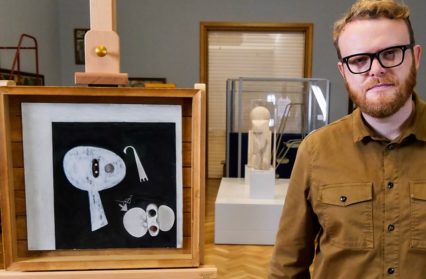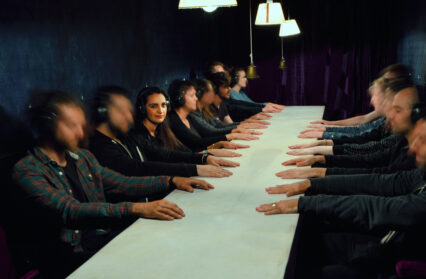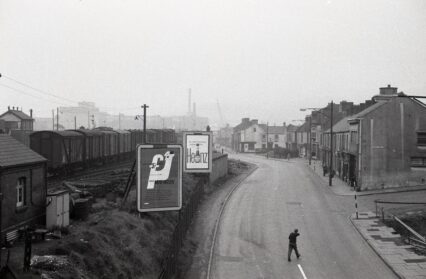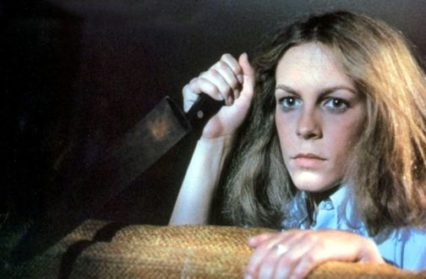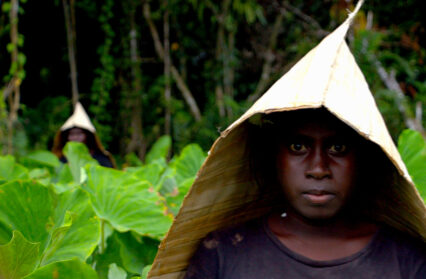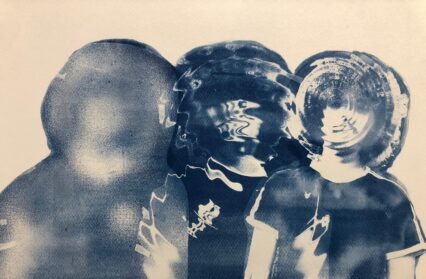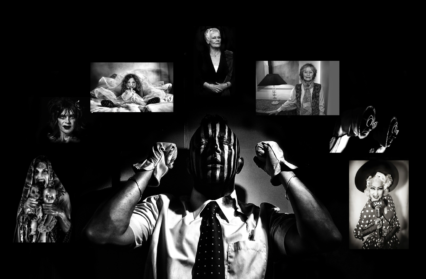Ceri Thomas reviews The Story of Welsh Art, the new BBC Cymru Wales series in which Huw Stephens traces the history of Welsh visual art from prehistoric times to present day.
This scintillating, English-language, three-part series is a high-quality BBC Cymru Wales TV production, as one would expect from the stable of the experienced Paul Islwyn Thomas at Wildflame. It needs to be in order to achieve its ambition to announce Welsh art to Wales and the world. Advance publicity states that this is “the first substantial look at visual art in Wales for two decades,” which, for those of us who are old enough to remember, is an allusion to the two, hefty, turn-of-the-millennium BBC Wales TV productions, Peter Lord’s The Big Picture (1999) and Tony Jones’ Painting the Dragon (2000). The assertion overlooks Framing Wales presented for BBC Wales by Kim Howells ten years ago.
The choice of a younger generation Huw (Stephens) as opposed to an older generation Huw (Edwards) is a smart move without being a radical one. The manner of both (Welsh-speaking) Welshmen is comfortable. The shift takes us from the presenter of The Story of Wales (2012) to that of The Story of Welsh Art. Neither Huws have the incisive, taut energy of an older generation Peter Lord, or for that matter, of the late, passionate Professor Gwyn Alf Williams. But they do have a solid, restrained and reassuring presence and they are well known and popular on both sides of Offa’s Dyke. The series title may also be a reference to E. H. Gombrich’s landmark book The Story of Art, first published in 1950, which paved the way for popular surveys spanning from the prehistoric to the present day. Episode one covers the period from 3000 BC to the end of the pre-Industrial Revolution period.
However, before we are taken on a car tour (as opposed to a Grand Tour) by the bespectacled and bearded radio presenter Huw Stephens, a tour punctuated by some impressive highlights of this long, early period, the opening programme spends almost five jam-packed minutes introducing the viewer to the series and to the episode.
We begin in the south, in the stores of Amgueddfa Cymru-National Museum Wales, and are told by Stephens that “Welsh art is an amazingly rich tradition just waiting to be uncovered,” and that he’s “going on a journey to discover for [himself] the untold story of Welsh art.” For the initiated, much of that story has been revealed, a process spearheaded by Peter Lord’s books, although Lord’s starting point is later and his finishing point slightly earlier. When Stephens states, in passing, that Welsh art “has the power to soothe and to shock,” an image of the 1926 painting ‘Bydd Myrdd o Ryfeddodau’ by Evan Walters is briefly shown, after a flurry of images (by Clarence Waite, Gwen John and industrial and landscape artists) and before further shots of landscape-related works by episode two’s Richard Wilson and episode three’s Paul Davies and Bedwyr Williams. This is the only use of the word “shock” which is a tenuous connection to the title of episode one, ‘The Shock of the Old’.
The problem is that whilst the early art we are shown may be arresting and thought-provoking, it is not shocking. The word was employed more effectively in the major 1980 BBC TV series on the advent of modern art, The Shock of the New, written and presented by Robert Hughes (an Australian, not a Welshman as his surname might suggest). Admittedly, we have perhaps become more inured to the shock of the old and new, but surely episode one is more a case of the ease of the young (Huw). Then again, the “shock” intended may be softer, and wider in its remit – namely, that people in England and Wales and beyond will be surprised by the extent and quality of Welsh Art and even of its existence, especially when so gently and ably delivered.
Having glimpsed Shani Rhys James’ studio, we begin in the north-west with Stephens walking on, very appropriately, the isle of Anglesey (Môn, Mam Cymru) and entering, torch in hand, the Neolithic passage grave, Barclodiad y Gawres, which is “older than the Egyptian pyramids” – a nod to Lord Carnarvon and the discovery of Tutankhamun’s tomb 99 years ago? – to view its rock art, in the company of the first in a suite of experts the presenter meets throughout the programme. The chamber’s inward-facing, circular, spiralling and zigzagging decorations “could be the earliest representation of a landscape in all Britain”.
This claim sets the bar for what follows, starting with the high status Mold Gold Cape, “one of the finest and most intricate Bronze Age artefacts in the whole of Europe”. It resides not in Wales, but in the British Museum. Twenty years ago this beautiful artefact was in Cardiff, at Amgueddfa Cymru-National Museum Wales, in the groundbreaking ‘Pwy Ydym Ni? / What makes Wales?’ exhibition masterminded by Kenneth Brassil.
The function of early artefacts is always open to interpretation. Interpretation is applied to the third artwork we see, the Iron Age Triskele plaque, also from north Wales. Could the triskele be an abstracted puffin, could it represent the cycle of life? Function and interpretation are discussed in the early Christian era too – in relation to the impressive St Chad Gospels book (which contains additions that prompt Huw to say “so the oldest example of Welsh writing, wow”) and imposing Celtic stone crosses such as the Nevern Cross (another “wow”).
Two fifteenth-century representations of Jesse and his tree follow – the Abergavenny Jesse wood carving (described as “a quantum leap in Welsh art” because of its realism and emotion) and the Denbighshire Jesse Window (“a blaze of colour and light” and “probably the most complete window in Wales”). The throwaway reference to fashionable beards, past and present, reminds us about the issue of masculinities and culture. All these examples are used to demonstrate the standing of Wales and its importance to the visual culture of Britain and continental Europe and this is underlined by the National Gallery London’s Donne Triptych (c. 1478) commissioned from Hans Memling – “the greatest artist of his day” (shouldn’t that be one of the great northern Renaissance artists?) – by the Welsh diplomat John Donne whose appearance in the painting is “thought to be the first painting of a named Welsh person”.
You might also like…
Listen to this week’s podcast episode where we speak to Huw Stephens and director Ian Jones about The Story of Welsh Art.
Subsequently, aristocratic swagger portraits of Lord Herbert of Cherbury and more restrained ones of the Mansels and their Margam Estate are nicely contrasted by the emergence of portraits by the home-grown, Carmarthenshire painter John Lewis. These Welsh works are extolled by a soberly dressed Peter Lord in his mid-Wales home, during a low key but momentous meeting of two generations of presenter (which begs the question, why is no writer or researcher listed in the credits?).
Heralded by strains of evocative music, the whistle-stop survey ends with the painter William Parry who “created a Welsh icon” when he portrayed his blind harpist father John. Mild-mannered Huw Stephens signs off by stating that episode two will cover the revolutionary treatment of landscape and “ordinary Welsh people are painted for the first time.”
The timing of the broadcast of episode one of The Story of Welsh Art, on St David’s Day 2021, could not be more patriotic or serendipitous, coming just two days after Wales won the Triple Crown. What will the rest of the UK think?
Episode one of The Story of Welsh Art is available to stream on BBC iPlayer.
Ceri Thomas is a freelance artist, art historian and curator.


